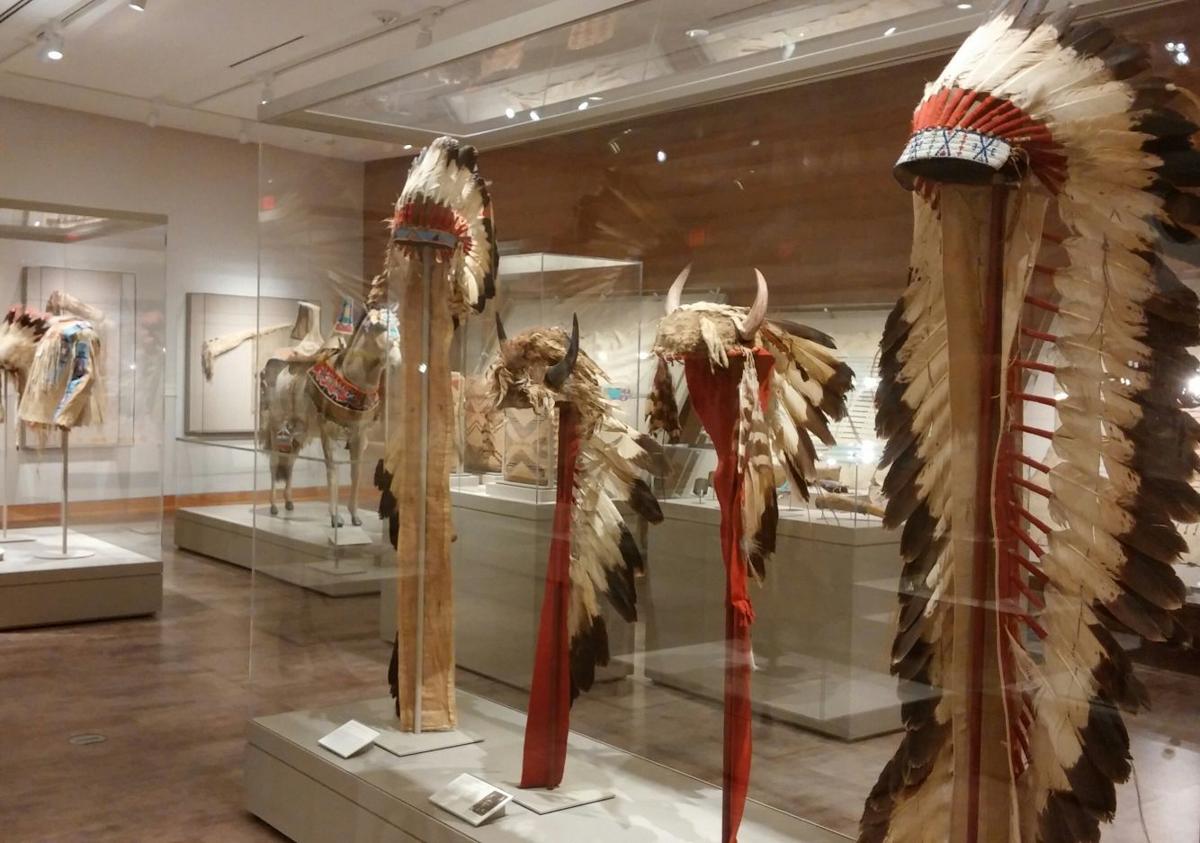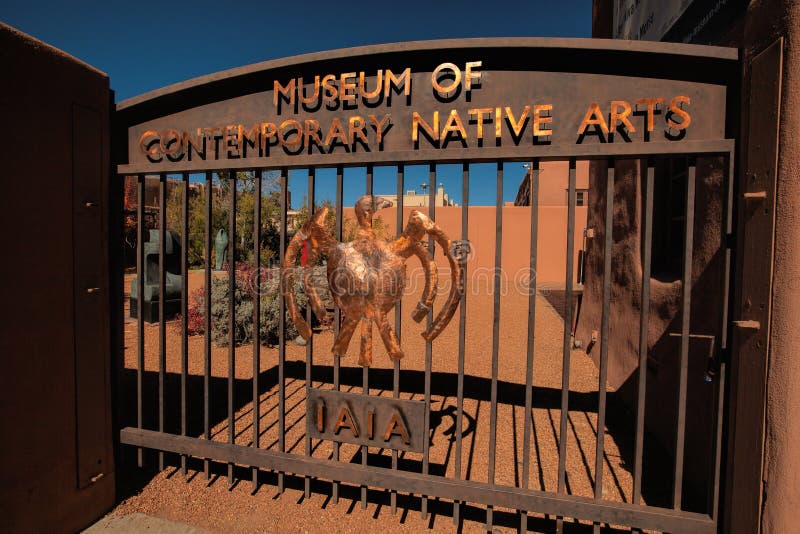
Native American Art Museums: A Deep Dive for the Discerning Art Enthusiast
Native American art, a vibrant tapestry woven from millennia of diverse cultural expression, spiritual reverence, and material ingenuity, presents a profound and often transformative experience for the discerning art enthusiast. Far from being mere ethnographic curiosities, contemporary Native American art museums, and dedicated galleries within broader institutions, serve as critical platforms for appreciating the aesthetic brilliance, historical depth, and ongoing innovation of Indigenous artists across North America. This exploration aims to guide the art enthusiast through the rich landscape of these institutions, emphasizing how to engage with Native American art beyond superficial admiration, embracing its complex contexts and artistic merits.
The Evolving Landscape: From Ethnography to Art History
Historically, Indigenous artifacts were often relegated to natural history museums, categorized as "ethnographic specimens" rather than "fine art." This classification reflected a colonial gaze that devalued Indigenous creative output, stripping objects of their artistic intent, individual authorship, and cultural significance. However, a significant paradigm shift has occurred, driven by Indigenous scholars, curators, and artists, as well as progressive museological practices. Today, Native American art museums are increasingly asserting Indigenous perspectives, foregrounding the artistic agency, technical mastery, and intellectual frameworks embedded within these creations.
For the art enthusiast, this evolution is crucial. It means approaching Native American art not as relics of a vanished past, but as dynamic expressions of living cultures, deeply rooted in tradition yet constantly evolving. Museums now strive to present art through a hermeneutic lens that acknowledges Indigenous epistemologies, allowing the objects to speak within their original cultural and spiritual contexts, while simultaneously asserting their universal artistic appeal. This approach invites a more sophisticated understanding, moving beyond a purely aesthetic appreciation to one that encompasses cultural narrative, material symbolism, and the artist’s unique voice.

Unveiling Artistic Diversity: Beyond a Singular Aesthetic
One of the most vital insights for any art enthusiast approaching Native American art is the sheer immensity of its diversity. "Native American art" is not a monolithic category; it encompasses thousands of distinct tribal nations, each with unique languages, spiritual beliefs, material cultures, and artistic traditions. To appreciate this art deeply, one must shed the misconception of a singular "Native American style."
Geographic and cultural regions offer a preliminary framework for understanding this diversity:
- Southwest: Renowned for Pueblo pottery (e.g., María Martínez’s black-on-blackware), Navajo weaving (intricate pictorial and geometric designs like Two Grey Hills or Ganado Red), Zuni fetish carving, and elaborate silverwork and turquoise jewelry. The art often reflects a profound connection to arid landscapes, ancestral Pueblo architecture, and spiritual ceremonies.
- Plains: Characterized by vibrant beadwork (floral, geometric, and pictorial designs on clothing, bags, and horse regalia), quillwork, hide painting (narrative depictions of battles, hunts, and ceremonies), and ceremonial pipes. The art embodies nomadic lifestyles, warrior traditions, and spiritual connections to the buffalo.
- Northwest Coast: Celebrated for monumental totem poles, intricate masks, bentwood boxes, and ceremonial regalia, often featuring highly stylized animal forms and complex formline designs. Art here is deeply intertwined with clan identity, potlatch ceremonies, and rich oral traditions.
- Eastern Woodlands: Known for intricate basketry (e.g., Wabanaki sweetgrass baskets), wampum belts (shell beads used for treaties and historical records), wood carving, and elaborate porcupine quillwork on birchbark. The art reflects forest environments, agricultural practices, and complex social structures.
- Arctic/Subarctic: Distinguished by carvings in ivory, bone, and stone (soapstone sculptures of animals and human figures), intricate parkas, and ceremonial masks. The art speaks to resilience in harsh environments, hunting traditions, and animistic beliefs.

For the art enthusiast, recognizing these regional and tribal distinctions is the first step towards a nuanced appreciation. Each region offers distinct material choices, technical innovations, aesthetic principles, and narrative content, providing an endless source of artistic discovery.
The Art Enthusiast’s Journey: What to Look For
Engaging with Native American art in a museum setting requires a multi-faceted approach, inviting the art enthusiast to consider various dimensions:
1. Contextual Understanding: Beyond the Pedestal
Unlike much Western art, which can often be appreciated purely for its formal qualities, Native American art is frequently deeply embedded in cultural, spiritual, and social contexts. An understanding of these contexts significantly enriches aesthetic appreciation.
- Function and Purpose: Many Indigenous artworks were created with specific functions: a pot for cooking, a basket for gathering, a mask for ceremony, a blanket for warmth and status. Understanding this original purpose elevates the object from a mere "craft" to a fully integrated artistic expression where form and function are inseparable. The beauty lies not just in its appearance, but in its efficacy and meaning within its intended use.
- Narrative and Symbolism: Many designs, patterns, and figures carry specific narratives, spiritual meanings, or clan identifications. For instance, a thunderbird motif on a Northwest Coast mask might symbolize power and protection, while a particular geometric pattern on a Navajo rug might represent the sacred mountains. Museums increasingly provide interpretive labels or multimedia resources to elucidate these meanings, allowing the enthusiast to "read" the artwork on a deeper level.
- Community and Kinship: Art often reflects community values, kinship systems, and shared histories. Understanding the artist’s tribal affiliation and the collective knowledge they draw upon provides a vital layer of appreciation for their individual contribution within a communal artistic tradition.
2. Material Mastery and Technical Brilliance
Indigenous artists historically worked with a profound understanding of their natural environment, transforming raw materials into objects of immense beauty and utility. For the art enthusiast, appreciating the mastery of materials and techniques is paramount.
- Precision and Skill: Observe the meticulous precision of beadwork, where thousands of tiny beads are sewn with exquisite detail to create complex patterns. Marvel at the symmetry and coil count in a finely woven basket, or the evenness of a hand-spun and dyed Navajo wool yarn.
- Transformation of Materials: Consider the process of transforming clay into a polished ceramic vessel, animal hides into durable and decorated clothing, or a massive cedar log into a towering totem pole. The skill involved in harvesting, preparing, and manipulating these natural resources speaks to generations of accumulated knowledge and artistic innovation.
- Innovation within Tradition: Note how artists adapt materials or techniques. The introduction of glass beads or commercial dyes, for example, did not diminish Indigenous art but spurred new forms of expression and color palettes, demonstrating artistic resilience and adaptability.
3. Aesthetic Principles and Indigenous Concepts of Beauty
While Western art history often emphasizes concepts like perspective, realism, or abstraction, Indigenous art operates on its own distinct aesthetic principles.
- Balance and Harmony: Many Indigenous art forms prioritize balance, often achieved through symmetry, rhythmic repetition, or careful distribution of design elements. This balance often reflects a philosophical quest for harmony in the natural and spiritual worlds.
- Pattern and Repetition: Intricate patterns are common, from geometric motifs to stylized natural forms. The repetition is rarely monotonous; instead, it creates dynamic visual rhythms and often carries symbolic weight, reflecting cyclical time or spiritual journeys.
- Color Theory: Indigenous artists employ sophisticated color palettes, often derived from natural dyes or pigments, chosen not just for visual appeal but for symbolic association. The contrast between matte and burnished surfaces on Pueblo pottery, or the vibrant hues of Plains beadwork, demonstrate a deep understanding of visual impact.
- Form and Space: Whether in the volumetric forms of a carving or the two-dimensional design on a textile, consider how artists manipulate form and space to create visual interest, convey movement, or encapsulate spiritual energies.
4. Innovation and Continuity: Contemporary Native American Art
Crucially, Native American art is not static. Museums increasingly feature contemporary Indigenous artists who are actively engaging with traditional forms, materials, and themes while pushing boundaries and incorporating modern influences. This segment of the exhibition is vital for the art enthusiast:
- Bridging Past and Present: Contemporary artists often reinterpret ancestral motifs, employ new media (photography, video, installation art, conceptual art), and address current social, political, and environmental issues through an Indigenous lens.
- Individual Voice: These artists assert their individual artistic voice within a rich cultural heritage, challenging stereotypes and contributing to a global art dialogue. Their work demonstrates that Indigenous art is a living, evolving force.
- Global Dialogue: Contemporary Native American art contributes to and challenges global art narratives, offering unique perspectives on identity, land, sovereignty, and decolonization.
Key Institutions and Ethical Engagement
Several institutions are exemplary in their presentation of Native American art. The Smithsonian’s National Museum of the American Indian (NMAI) in Washington D.C. and New York, curated largely by Indigenous staff, offers a comprehensive and culturally centered approach. The Heard Museum in Phoenix, Arizona, specializes in Southwestern art and hosts a renowned annual market. The Museum of Indian Arts and Culture (MIAC) in Santa Fe, New Mexico, provides deep regional insights. Major encyclopedic museums like the Metropolitan Museum of Art or the Art Institute of Chicago are also increasingly integrating Native American art into their permanent collections, positioning it within the broader discourse of global art history.
For the art enthusiast, ethical engagement is paramount. This includes:
- Respecting Provenance: Understanding the history of an artwork’s acquisition, particularly in light of the Native American Graves Protection and Repatriation Act (NAGPRA), which mandates the return of certain cultural items to their originating communities.
- Supporting Indigenous Artists: Actively seeking out and supporting contemporary Indigenous artists and Native-owned galleries.
- Challenging Stereotypes: Using the museum experience to dismantle preconceived notions about Indigenous peoples and their art, embracing the complexity and vibrancy of their cultures.
Conclusion
Native American art museums offer an unparalleled opportunity for the art enthusiast to embark on a journey of profound aesthetic and intellectual discovery. By moving beyond a superficial gaze and engaging with the art through a lens that values cultural context, material mastery, distinct aesthetic principles, and contemporary innovation, one unlocks a deeper appreciation for the boundless creativity and enduring resilience of Indigenous peoples. These institutions are not merely repositories of objects; they are dynamic spaces for dialogue, education, and the celebration of an artistic heritage that continues to enrich the global tapestry of human expression. For the truly discerning art enthusiast, delving into Native American art is not just an encounter with beauty, but an immersion into millennia of living history, spirituality, and unparalleled artistic ingenuity.


